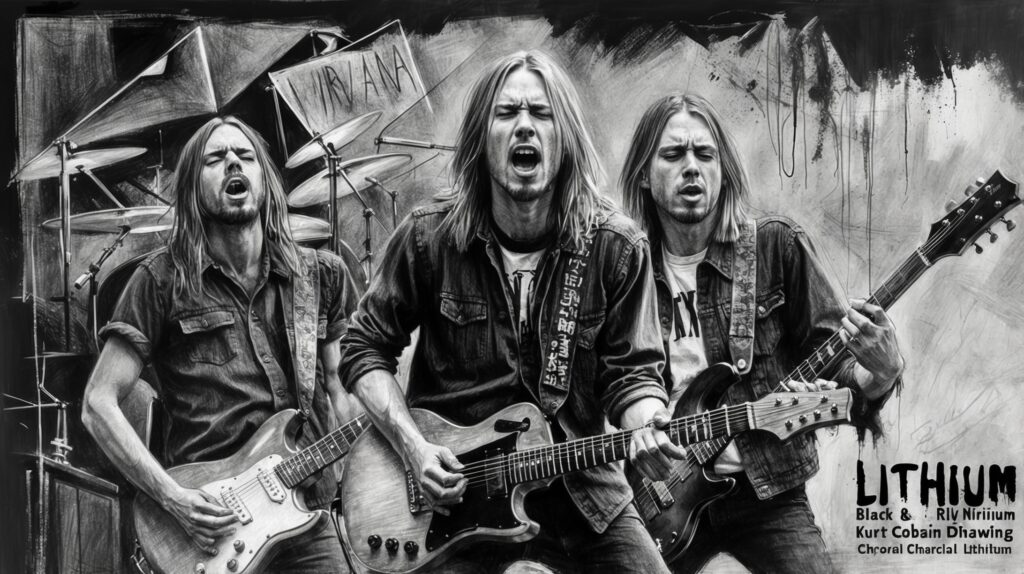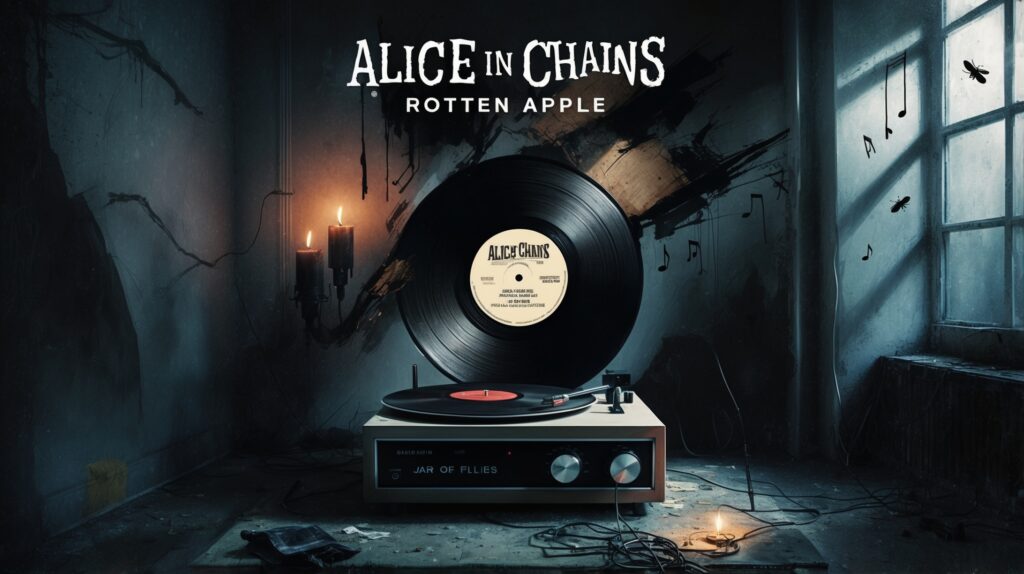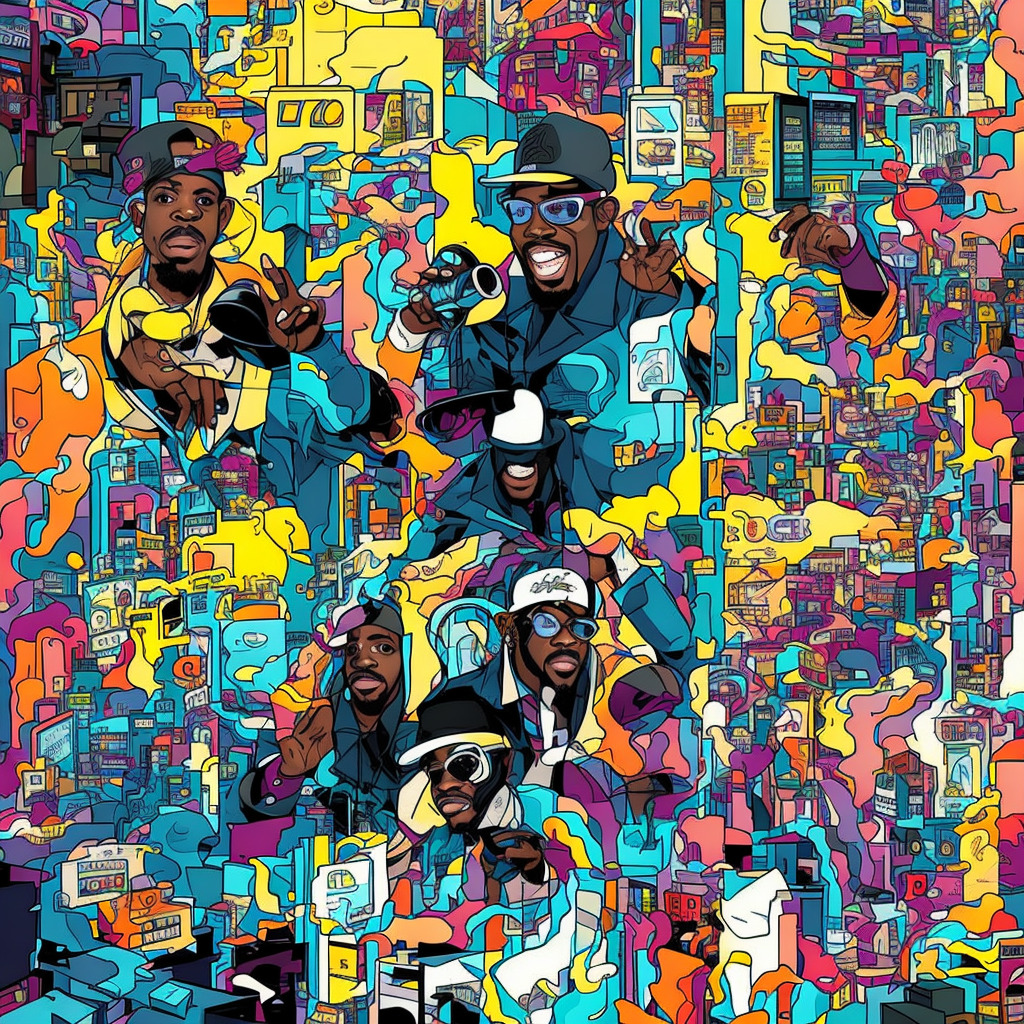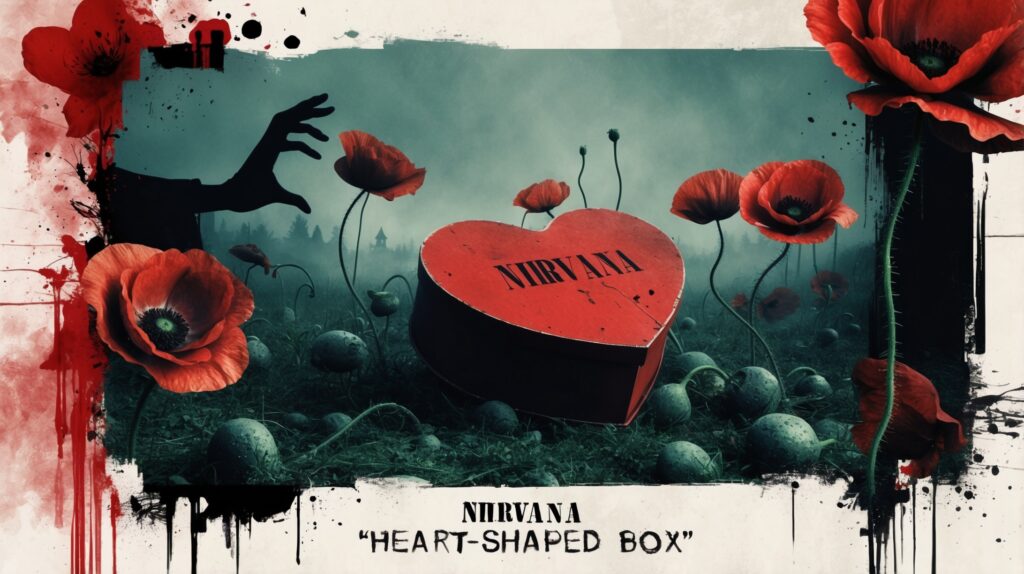Nirvana: The Architects of Grunge and Their Impact on the Music World
Nirvana emerged as the defining voice of a generation, carving their niche in rock history with the grunge movement. The band’s insightful yet edgy sound, epitomized by “Lithium,” continues to resonate as a powerful anthem of authenticity and rebellion.
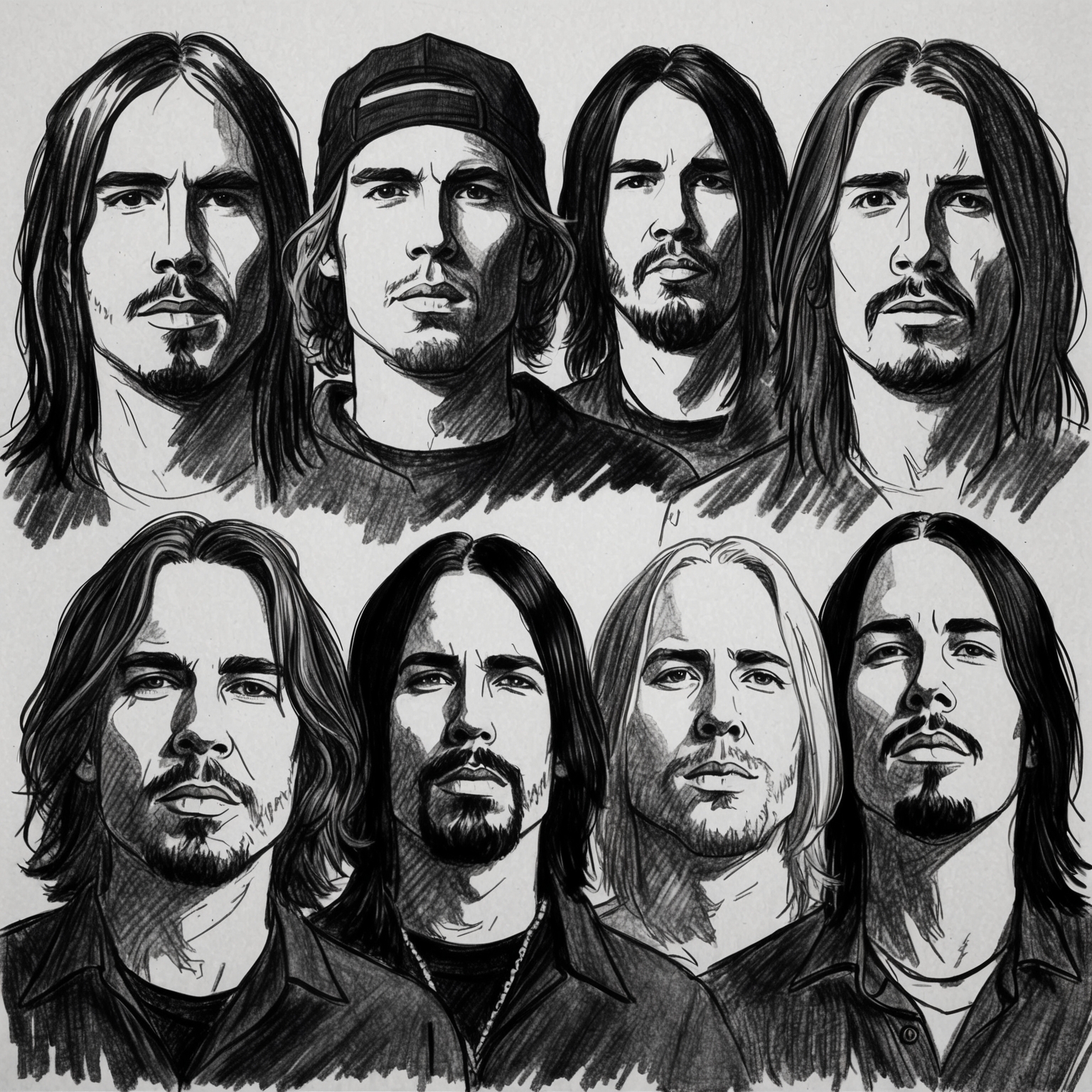
Nirvana was more than just a band; they were the architects of a musical revolution. Emerging from the Pacific Northwest in the late 1980s, Nirvana became the poster children of the grunge movement, thanks to their explosive sound that perfectly encapsulated the angst and disillusionment of a generation. “Lithium,” a track from their groundbreaking album “Nevermind,” holds a critical place in both the band’s career and the larger tapestry of rock music. This song epitomizes Nirvana’s ability to articulate raw emotions juxtaposed with intense musical energy, and it remains a quintessential piece illustrating the band’s ethos and their musical prowess.
The origins of Nirvana trace back to Aberdeen, Washington, with the band’s core formed by the late frontman Kurt Cobain and bassist Krist Novoselic in 1987. Initially emerging from the underground scene, they quickly garnered attention for their distinctive sound that combined punk rock’s intensity with melodious hooks. While their lineup saw various changes, the addition of drummer Dave Grohl in 1990 solidified what would become their classic formation. Together, this trio propelled Nirvana to international acclaim, crafting some of the most iconic music of the era.
The release period of “Lithium” in 1991 marked a transformative era for Nirvana, as they navigated the tumultuous yet thrilling waters of sudden fame. The song itself was emblematic of the band’s ability to weave complex themes of alienation, anxiety, and a quest for solace within the constraints of their own distinct sound. At a time when the mainstream music scene was saturated with polished pop, Nirvana offered a raw, unfiltered alternative, reconnecting audiences with the authenticity that grunge music so deeply resonates with.
Kurt Cobain: The Visionary Behind ‘Lithium’
Kurt Cobain, the creative force behind ‘Lithium’, shaped this iconic track with his unique style and personal influences.

Kurt Cobain, the iconic frontman of Nirvana, was the principal composer of the song ‘Lithium’. Renowned for his profound and often introspective songwriting, Cobain emerged as a musical force during the early 1990s, a period when his band played a pivotal role in bringing grunge to the mainstream. Born in 1967 in Aberdeen, Washington, Cobain’s love for music was apparent from an early age. He taught himself to play guitar and was influenced by a diverse array of genres and artists, from classic rock and punk to indie and alternative sounds. His work with Nirvana helped define the sound of a generation, and his untimely death in 1994 solidified his status as a musical legend.
Cobain’s musical style was marked by raw emotion, powerful lyrics, and a distinctive blend of melody and dissonance. His influences were varied, with artists like The Beatles, Led Zeppelin, and The Pixies leaving a lasting impression on him. This eclectic taste found its way into his compositions, blending catchy hooks with gritty themes that resonated deeply with listeners. His partnership with fellow Nirvana members Krist Novoselic and Dave Grohl created a dynamic synergy that propelled the band to global fame, with each member bringing their unique strengths to the table. Together, they crafted songs that were as poignant as they were explosive, speaking to the alienation and angst of their generation.
In the creation of ‘Lithium’, Cobain’s role was both pivotal and deeply personal. He wrote the song’s lyrics and composed its music, weaving together a narrative about isolation, identity, and the search for hope amidst despair. The contrast between the quiet verses and thunderous choruses showcases Cobain’s knack for dynamic shifts and emotional crescendos. This interplay between the music and lyrics amplifies the song’s themes, creating an immersive and cathartic experience for the listener. Despite its initial mixed critical reception, ‘Lithium’ has endured as a beloved track in Nirvana’s discography, thanks in large part to Cobain’s visionary artistry.
Honoring ‘Lithium’: From Recognition to Reinterpretation
‘Lithium’ by Nirvana may not have initially won major awards, but its enduring influence is celebrated through covers by various artists and its inclusion in cultural media.
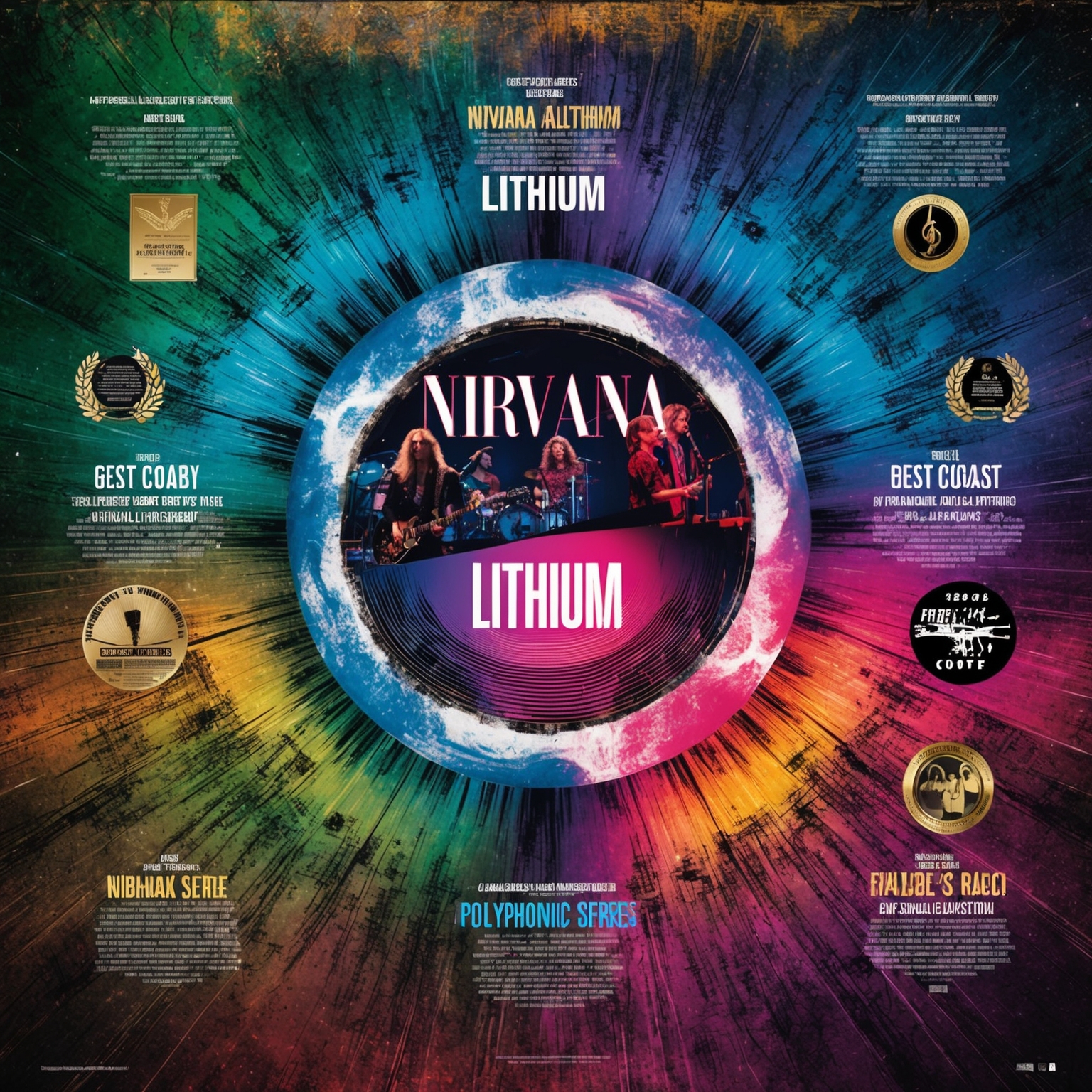
‘Lithium’, a standout track from Nirvana’s critically acclaimed album ‘Nevermind’, remains a beloved anthem in the grunge genre. Released in 1991, the song did not immediately sweep the award ceremonies, but its enduring legacy and influence in popular culture are undeniable. The song didn’t win any major awards upon its release, but it has since been recognized by several music publications and lists. For example, it often appears on lists ranking the greatest songs of the 1990s and the greatest rock songs of all time. Credited for its raw emotion and unique sound, ‘Lithium’ holds a special place in the hearts of Nirvana fans and music enthusiasts alike.
Over the years, ‘Lithium’ has inspired many artists across various genres to create their own interpretations, proving its timeless appeal and versatility. A notable cover comes from Best Coast, featured in 2011 as part of a tribute album for Nirvana’s ‘Nevermind’, showcasing a lighter, indie twist on the beloved track. The song was also brilliantly covered by the band The Polyphonic Spree, adding an orchestral spin that brought a new dimension to the original grunge sound. These covers are a testament to the song’s wide-ranging influence and ability to resonate with audiences across different musical landscapes.
Besides its reinterpretations by other artists, ‘Lithium’ has made its way into various forms of media over the decades. The song was featured in the soundtrack of the video game ‘Rock Band 2’, where players could experience firsthand the infectious energy and raw intensity of Nirvana’s sound. Its inclusion in such a popular game not only emphasizes its commercial success but also introduces a new generation to its iconic status. Over the years, it continues to make appearances in popular culture, exemplifying its lasting impact.
The Rise and Resonance: Charting ‘Lithium’s’ Journey
Nirvana’s ‘Lithium’ experienced moderate chart success, stepping into the spotlight with a peak position of number 64 on the Billboard Hot 100 and number 1 on the Modern Rock Tracks chart. It further solidified Nirvana’s influence in the rock genre during the ’90s.

Lithium, a standout track from Nirvana’s iconic 1991 album Nevermind, was released as the band’s third single on July 13, 1992. This was a strategic release, designed to capitalize on the monumental success of Smells Like Teen Spirit and Come as You Are. Upon its release, ‘Lithium’ made a significant impact on various charts, underlining Nirvana’s musical prowess and the song’s powerful resonance with audiences.
While ‘Lithium’ did not reach the top of the Billboard Hot 100, it still marked its presence by peaking at number 64. However, the song shone brighter on the Modern Rock Tracks chart, where it climbed to an impressive number 1 position. In the UK, ‘Lithium’ reached number 11 on the UK Singles Chart, reinforcing its global appeal. The strategic release timing allowed the song to fill a niche niche in the rock landscape and further cement Nirvana’s legacy in the grunge movement.
Commercially, ‘Lithium’ fit perfectly into the whirlwind success Nirvana was experiencing at the time. This track was not the breakthrough hit that Smells Like Teen Spirit was, but it maintained the momentum, showcasing different dimensions of the band’s musicality. Its notable performance on alternative rock stations and niche markets highlighted the importance of cleverly curated marketing strategies, which included memorable television performances that won over both fans and critics alike. Social buzz around Nirvana and ‘Lithium’ paved the way for the grunge movement to penetrate mainstream culture more deeply.
Exploring the Visual Journey of ‘Lithium’
Without an official music video, ‘Lithium’ thrives through live performances and fan-made visuals, illustrating the song’s raw energy and emotional resonance.

Nirvana’s ‘Lithium’ does not have an official music video, but its impact in the visual media sphere is nonetheless significant. While there is no dedicated video to accompany the song’s haunting exploration of loneliness and the search for faith, the live performances and fan-made compilations have served as a visual ode to the track’s spirit. **The absence of a traditional music video** hasn’t hindered its popularity; rather, it has spurred creativity among fans and filmmakers who have crafted their own interpretations and visual narratives. The song’s frequent inclusions in televised performances and Nirvana’s iconic MTV Unplugged sessions have become the de facto visuals associated with ‘Lithium.’ Each live rendition captures the raw energy and emotional depth of the band, driven by Kurt Cobain’s passionate vocals and guitar work.
The absence of an official video allows fans to focus on the music’s emotional weight and lyrical depth, which contributes significantly to its enduring appeal. **Critics and audiences alike** appreciate this raw approach. They note that without a prescriptive visual narrative, listeners are free to craft personal connections with the song, often leading to varied interpretations. Many fans have seized this opportunity to create DIY music videos that capture their unique perspectives of Nirvana’s music, further amplifying the song’s reach and engagement.
These DIY projects not only demonstrate fan dedication but also exhibit the timeless quality of Nirvana’s music and a universal desire to associate imagery with sound. Despite no formal video creation, ‘Lithium’ thrives in a space where visual art and music storytelling intertwine organically. The band’s untethered performances have consistently provided a canvas for artistic expression across diverse mediums, further immortalizing ‘Lithium’ in music history.
Decoding the Musical Core of ‘Lithium’
Explore the dynamic musical structure of Nirvana’s ‘Lithium,’ decoding its key elements, dynamic shifts, and sonic uniqueness that bridges the band’s early energy with mature introspection.

Exploring the musical structure of Nirvana’s ‘Lithium’ provides an intriguing insight into the band’s creative process during the early ’90s. The song is quintessentially constructed in the key of E major, a choice that mirrors the duality of its lyrical themes – juxtaposing hope and disillusionment. The chord progression primarily follows a straightforward pattern, oscillating between E, G#, C#, and A in the verses, which then shifts dramatically in the chorus sections. This transition from a subdued verse to a more intense chorus is a staple of Nirvana’s grunge sound, highlighting their ability to dynamically shift energy within a track.
The tempo of ‘Lithium’ is set at a moderate pace, around 124 beats per minute, creating a stark contrast between the laid-back verses and the loud, driving choruses. The melody is deceptively simple yet deeply expressive, underscored by a rhythmic pulse that ties together the shifts between verses and choruses. The harmony is largely driven by Cobain’s gritty vocal delivery, layered seamlessly over the rhythmic and melodic foundation laid down by the guitar and drums.
Instrumentally, ‘Lithium’ stays true to the classic rock trio format with electric guitars, bass, and drums being the primary elements. Cobain’s guitar work is notable for its raw, powerful riffs which complement Krist Novoselic’s bass lines that add depth and texture to the arrangement. Meanwhile, Dave Grohl’s drumming injects energy and precision, propelling the song forward. This combination creates a unique sonic landscape that captures Nirvana’s distinctive sound.
In the context of Nirvana’s discography, ‘Lithium’ stands out for its intricate balance of angst and introspection – marking a significant point in the band’s evolution. Compared to earlier tracks like ‘Bleach,’ ‘Lithium’ showcases a matured, more refined approach to songwriting. It bridges the explosive rawness of their debut album and the nuanced vulnerability that characterized their later work, as shown in ‘In Utero.’ This song, in particular, reflects the band’s growing confidence in exploring complex emotional themes while maintaining their rebellious spirit.
Interestingly, ‘Lithium’ was recorded at Sound City Studios under producer Butch Vig, who played a pivotal role in shaping the album’s polished yet edgy sound. Anecdotes from the recording session often highlight Cobain’s insistence on capturing the raw energy of their live performances, resulting in several intense takes to get the right feel. This commitment to authenticity is something that resonates throughout the track, adding depth and resonance to the final mix.
Deciphering the Emotional Tapestry in Nirvana’s ‘Lithium’
Explore the complex themes and emotional depth in Nirvana’s ‘Lithium’. This analysis delves into the lyrical intricacies of the song, shedding light on its introspective storytelling, effective literary devices, and the emotional impact it has on listeners.
They’re in my head
I’m so ugly, that’s okay, ’cause so are you
Broke our mirrors
Sunday morning is everyday, for all I care
And I’m not scared
Light my candles in a daze
‘Cause I’ve found God
Yeah, yeah
Yeah, yeah
Yeah, yeah
Yeah, yeah
Yeah, yeah
Yeah, yeah, yeah
I’m so lonely, that’s okay, I shaved my head
And I’m not sad
And just maybe I’m to blame for all I’ve heard
But I’m not sure
I’m so excited, I can’t wait to meet you there
And I don’t care
…
******* This Lyrics is NOT for Commercial use *******
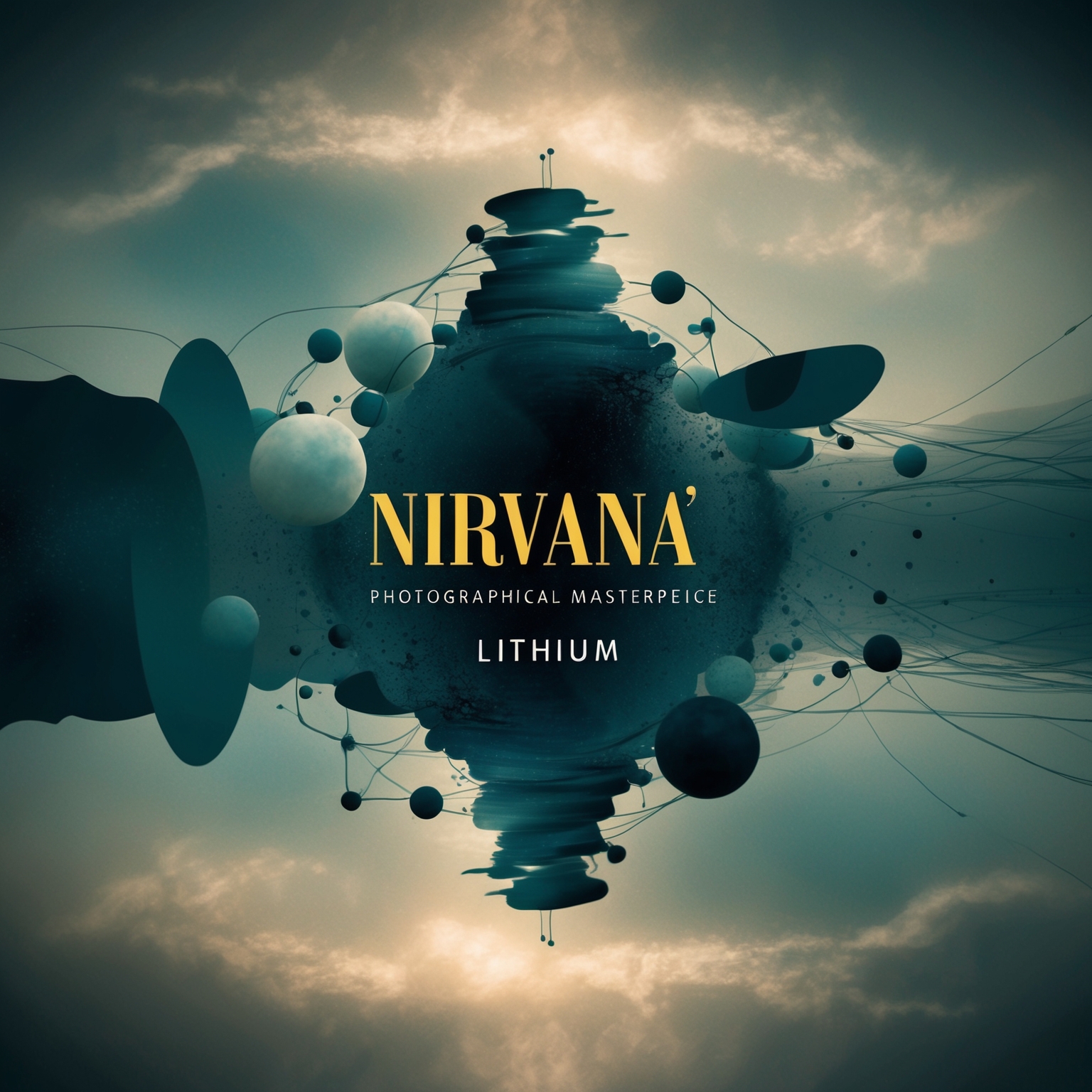 Lyrical Themes and Messages: ‘Lithium’ by Nirvana is a profound exploration of complex psychological states and emotional volatility. The lyrics delve into themes of loneliness, identity struggles, and spiritual searching, which are deeply personal and resonate with listeners across different walks of life. Released during a time when societal discussions around mental health were more stigmatized, the song paved the way for more open conversations on these issues. Its haunting portrayal of the fragile human psyche reflects the tension between euphoria and despair, encapsulating the essence of the early 90s grunge scene that often spotlighted internal emotional battles.
Lyrical Themes and Messages: ‘Lithium’ by Nirvana is a profound exploration of complex psychological states and emotional volatility. The lyrics delve into themes of loneliness, identity struggles, and spiritual searching, which are deeply personal and resonate with listeners across different walks of life. Released during a time when societal discussions around mental health were more stigmatized, the song paved the way for more open conversations on these issues. Its haunting portrayal of the fragile human psyche reflects the tension between euphoria and despair, encapsulating the essence of the early 90s grunge scene that often spotlighted internal emotional battles.
Narrative and Storytelling: Narratively, ‘Lithium’ employs a first-person perspective that provides an intimate glimpse into the singer’s turbulent mind. This closeness creates a confessional tone, drawing listeners into the rollercoaster of emotions expressed in the lyrics. The song lacks a conventional story arc, instead weaving a tapestry of fluctuating emotions, from happiness and self-deprecation to acceptance and defiance. This narrative structure contributes significantly to the song’s impact, as it resonates with audiences who have experienced similar emotional contradictions.
Use of Literary Devices: Cobain’s use of literary devices in ‘Lithium’ amplifies the song’s emotional depth. Metaphors like “Broke our mirrors” suggest self-destructive tendencies and shattered perceptions of self-identity. The repetitive use of “Yeah” serves as a stark juxtaposition to the complex themes discussed, signifying an internal refrain or mantra. The interplay of simple rhymes and deceptively straightforward language enhances the song’s lyrical resonance, making its poignant insights accessible yet profound.
Comparative Analysis with Other Works: When compared to other Nirvana tracks, ‘Lithium’ stands out for its raw introspection and its unflinching portrayal of mental health struggles. Although similar themes can be found in ‘Smells Like Teen Spirit’ and ‘Come as You Are,’ ‘Lithium’ provides a darker, more introspective look, devoid of the irony or rebellion characteristic of the other hits. This unique introspective focus helped solidify the song’s iconic status in the band’s discography.
Emotional Impact and Relatability: The lyrics of ‘Lithium’ have an undeniable emotional pull, resonating with listeners who find solace and understanding in its candid acknowledgment of mental strife. The raw vulnerability and unapologetic honesty evoked by Cobain’s words allow listeners to connect with the song on a profoundly personal level, often interpreting it through their own experiences with mental health. This relatability, combined with Nirvana’s powerful performance, propelled the song’s enduring success.
Did you know Nirvana’s Lithium didn’t have an official video? Fans kept the grunge spirit alive with DIY masterpieces! 🎸✨ #Nirvana #Lithium #GrungeTrivia tinyurl.com/3ceepe58
Click to Tweet

